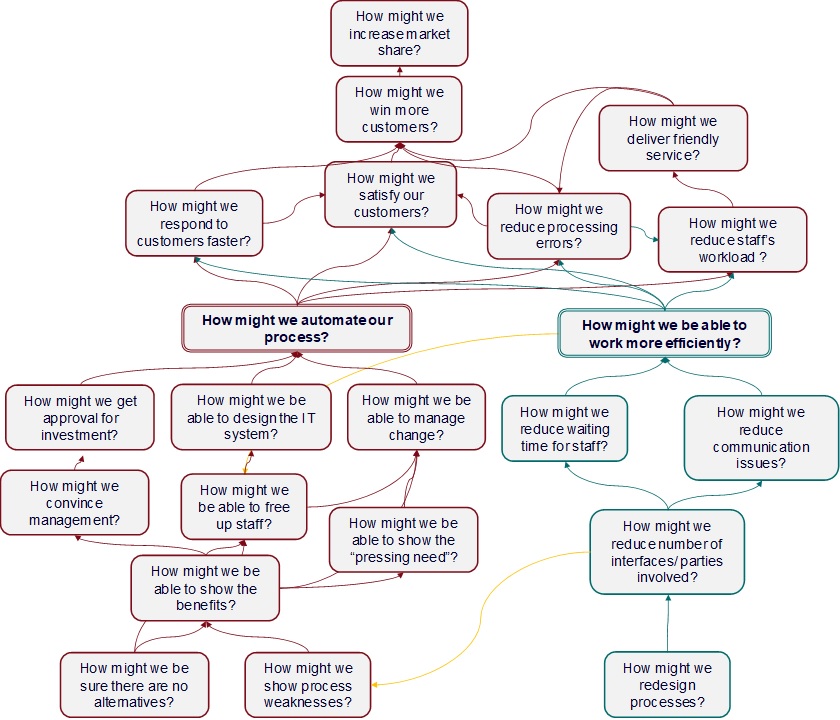Think like Spiderman
- One type is related to space (position-perspective). By asking “Why?” and “What is stopping you?” he can move from a given position to greater abstraction (more of a visionary, motivating angle) or to a specific position (more a tactical angle).
- Another type is related to time. Timing is always a factor. Where does all the motivation, vision come from? What are the past causes? When did they happen? And what has and is stopping us from moving into our desired future? And by when?
- Finally there is a combination of both in the WEB – the movement. Movement goes in two basic directions:
- Depth: By asking the question “Why?” many times over new question statements proceeding from the starting challenge we move in greater analysis of the task and underlying assumptions.
- Breadth: By asking the question “Why” and “Why else” we see the task under a different light.
The Case – Webbing the Problem
We met a client to prepare the launch of their Process Excellence programme. One of the project proposals we have been looking at was putting the solution upfront being “Automation of the XYZ application process to increase customer satisfaction”. Obviously, everyone, including project leader, sponsor, head of department and even CEO were quite sure that this was the way to go. Since having the solution stated that clearly, we could not expect creative and open-minded teamwork that could apparently lead to a different solution. Hence, we decided to “Web” the task and shed some light on the background behind the project definition (Figure 1).

Finding the Purpose
Finding Potential Root Causes
The Webbing Method
Contextual Thinking
Break-Through Meaning/Insight Search
Abstract Words that mean different things to people will come up. These words should be defined, explored and agreed upon, especially if they are critical for the ideation process because they provide the most important information for focused thinking.
Opinions, Assumptions, Conclusions and many other non-factual items will come up as well. Using the ladder of abstraction the facilitator may want to clarify with the group in order to look into the data more closely – always asking, “What is the other data that we are missing?”
Innovative Areas and highly efficient ways to solve problems will come up by facilitating this tool. Some of the most promising areas companies miss out because of not turning their current challenges into innovative opportunities to deliver higher value. Webbing provides the connection between both.

